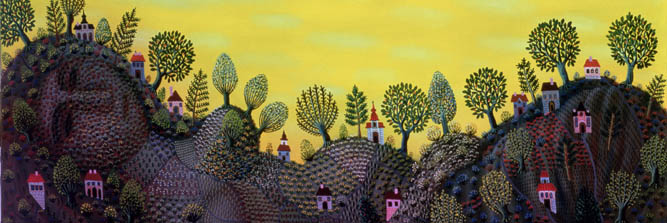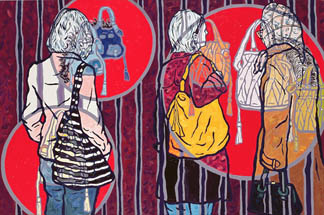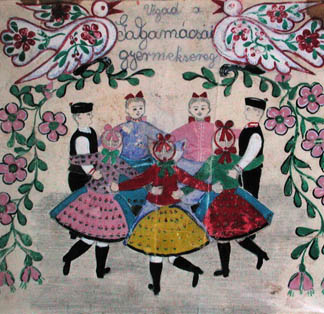Published 25/09/2009

If you do an online search for ‘Hungarian modern art’, chances are the results will be somewhat limited. At Bridgeman we now hope to address this cultural gap with the addition of the work of five contemporary Hungarian artists, spanning several generations, ensuring that twentieth-century Hungarian art is fully represented within the archive.
|
Bright, bold and idiosyncratic, their work is hugely appealing in its own right and can be used for book covers, cards and posters or for specific features on Hungary. Global issues are also addressed including the environment and consumerism.
Marta Martonfi-Benke’s (b.1958) art is characterised by a deep personal attachment to nature and natural patterns, her theme being the Hungarian countryside, usually capturing a sparkling sunlit atmosphere. Her series depicting eerie, suburban night scenes are a marked departure in her oeuvre. |

|
|

|
Tamas Galambos (b. 1939) is an internationally acclaimed artist whose idiosyncratic sophisticated-naïve style renders him a champion of outsider art. He combines the surrealist's free associations with a children's fairy tale fantasy, applying characteristically ornamental, folkloric brushwork. His themes vary from mythology and politics to nature, with colourful compositions never short of a tinge of irony. |
|
Emil Parrag (b.1925) has lived through some of the most tumultuous events in Hungarian history. Painting in a figurative, expressionist style in the 1960s, in strong opposition to the Communist Party and its directives that propagated socialist realism in the arts, his choice of subject matter meant that his work was not exhibited in the Cold War era, with the resultant financial and existential insecurities. |

|
|

|
Magdolna Ban's naïve painting perfectly reflected the idyllic world of her youth, in a Hungary that no longer exists. Moving away from naïve art she developed a distinctive style incorporating elements of mystic reverie and surrealism to create works of poetic beauty and vibrant colour. Magdolna is a member of the Henri Rousseau Group and the holder of distinguished art prizes (Prix Suisse de Peinture Naïve). One of her paintings, 1956 has been included in a book called ‘1001 Paintings You Must See Before You Die” and is about the attempted 1956 Hungarian Revolution. |
|
Nora Soos (b.1979), the youngest artist of the group, depicts a Hungary that is cosmopolitan and commercial rather than rural and mystical. Nora has shown in international exhibitions and art fairs from Italy to Belgium, winning many awards. |

|
The work of these artists is absolutely remarkable in the light of Hungary’s recent history
The fact that their spirits were not broken by so many years of economic hardship and suppression is testament to their devotion to artistic expression. Even though Hungary has been independent for twenty years, it has understandably taken a long time for the country to recover. Hungary is finally ready to emerge from the shadows of the past.
The Bridgeman Art Library would like to thank Geiger Szabo for his hard work in facilitating several of the relationships with artists within Hungary. Geiger's enthusiasm and assistance has been crucial in this project.
|

|
Not just Hungarian modern art… Footnote - Short history of Hungary The modern era has been equally if not more calamitous for Hungary. WWI devastated her economy and led to the collapse of the Austro-Hungarian Empire. After the defeat of Germany in WWII, Hungary became a Soviet satellite state under Stalinist rule. Thousands were executed and imprisoned and hundreds of thousands of intellectuals were purged. Cultural life was stifled and free thinkers deemed heretical. In 1956 a nation wide revolt was brutally repressed by the Soviets. Thousands of Hungarians were assassinated including the much loved Prime Minister Nagy. Hungary remained under Soviet control until 1989 when Hungary began to taking down its barbed wire fences along the Austrian border. For many, this event was the first tear in the Iron Curtain and started a chain reaction that led to end of Soviet rule in Eastern Europe. In 1990 free elections were held in Hungary and the country finally shed Soviet dominion. |


